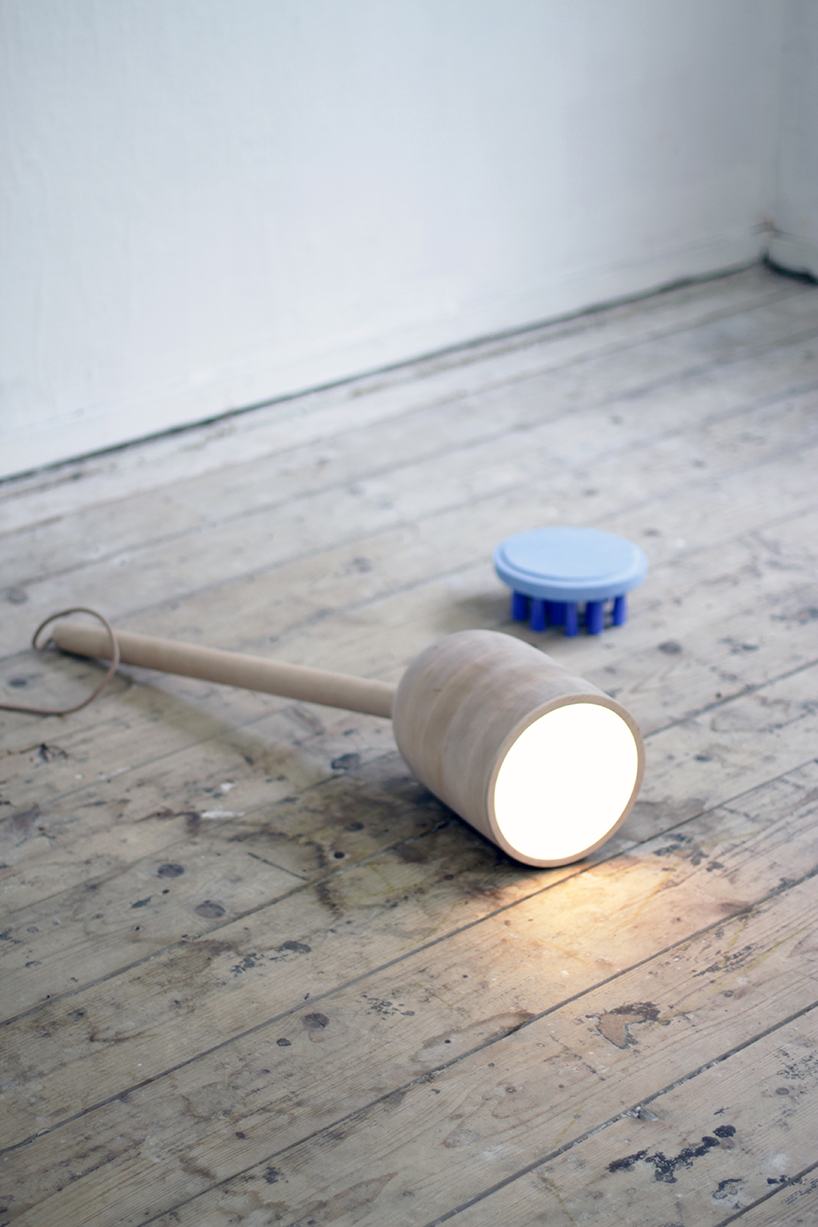
learn to unlearn by Lina-M. Köppen from germany
designer's own words:
“Man shapes his environment and the environment shapes man.” I am fascinated by this mutually evolving relationship, and as a result of my thesis, I have sought a way for individuals to start afresh and redefine themselves by reshaping the things around them. This response is critical of society for supplying and demanding objects designed to complement our human limitations. Could we instead make things that empower us through their in-built fallibility? By ridding objects of a predetermined “perfect” function, we can be free to discover them and rediscover ourselves in the process. “Learn to Unlearn” is a design ideology expressed in a series of ambiguous objects that overthrow the unconscious learned behavior and expectations governing our perception. The family of objects that developed from my thesis is largely based on the redefinition of furniture archetypes. Each object is an open invitation to the human to determine its use. The bottomless containers demand a new strategy to be filled, while the two-legged stool encourages us to rethink the act of sitting. The lamp challenges us with its weight and unseen mechanism, the tall shelf can only be reached by interacting with the direct environment, and the broom lets us not only clean but also develop a personal bodily response. Some objects are even less defined and invite the user to imagine an entirely personal interaction. Only when objects become alive in this way are we stimulated to explore new possibilities.
How did we become who we are today? Identity, one of the most critical contemporary issues, shapes not only the single human but also the entire society. My thesis explores this idea of societal production and challenges the phenomenon through the process of unlearning.
When we are born, we immediately begin to learn — from everything we see, hear, and experience. We learn from others who have learned before us, and therefore we become part of a construction of knowledge that evolves continually.
Before we became who we are today, before we were adults, we used to see everything from a different perspective, one that was only possible when we had yet to gain certain knowledge. Not knowing meant that we saw certain things as complete, though we would now see those things as incomplete. Before, we would extract function from what things were, rather then what they were supposed to be. We could imagine character in almost everything and therefore, we could express ourselves in a more personal way. Over time, however, we would repeat what older people showed us, and now children repeat what we show them.
Society is formed in a similar way to our neural network: everything it sees, hears, and feels is embedded within memory. This process, otherwise known as learning, builds the basis for everything in existence. We learn as individual humans and consequentially form a collective body of knowledge as a society. This common knowledge, in turn, forms the single human.
Industrialized societies tend to develop ambitions for expansion and development, often in the name of personal freedom and choice. Large-scale, globalized production promises material goods within a well-publicized consumerist model to every household, regardless of place, culture, or economic condition.
Yet it seems that, in some way, these ambitions have constrained the individual instead. We no longer depend on our original background; rather, we each create ourselves according to a worldwide average. In my perspective, the global options we have today are the biggest limitation of industrialized society. The question arises: what is the relationship between the way we create ourselves and the things that are created for us?
The production of objects is nothing less than a form of education. Everything manifests a tool for learning. Education should not be seen as something bordered by institutions such as schools or families, but rather a thin layer covering everything in our environment. The sounds we hear lead to words, the things we see lead to images, and the motions of our body create the interface between the human and the environment. From this viewpoint, we see that everyone is educated — by society as much as by formal teaching.
Humans shape their environment and the environment shapes humans. On an individual level, we each create our own identity, but we are simultaneously reproducing society. We are taught and then propagate what society defines as “normal”, and we constantly measure our own idiosyncrasies against this standard. In doing so, we not only devalue our individuality but also we prevent others from treating us in a humane way. In fact, we handle ourselves as commodities for sale.
The way we create ourselves and therefore interact with our environment is based on societal reproduction. Human characteristics are mainly controlled through time, participation and reputation. Both in the short- and long-term, we reinforce and extend the capacity of the natural human through the manufacture of appliances and infrastructures. The superman ideal is an allegory for the way we move, decide, and interact today. The closer we get to the threshold of the superman, the more we are driven by our social ambition, which results in automatic behavior and identity. At some point, it becomes necessary to ask: how can designing be humane if we design to become someone else?
The relationship between production/consumption and being is a self-contradictory process arising from our current society. We have been programmed to avoid failure, forgetting that our failures would constitute our ability to sustain a natural setting. We are constantly solving but also fueling our conflict with the natural. Therefore, according to Schweitzer, "man has become superman," but the production of the tools to enable this perfection has also triggered the passivity of humans towards their environment. The streamlining and automating of processes in turn challenge human identity in terms of personal expectations. Humans lose their ability of objective self-awareness. Ultimately, we simply know too much, and we must unlearn in order to really know ourselves.
My design reaction proposes a new model — "learn to unlearn" is the belief in self-empirism and “limitation” as an endorsement of personal identity. "Learn to unlearn" is not a design method but rather a common ideal of seeing, feeling, deciding, and interacting directly with our environment. In that sense, unlearning is only possible if we are forced to adapt to alleged failures. Designing failure is nothing more than a stepping stone on the way to a new human experience.
As a response to my thesis, I have shaped a family of furniture objects in which each one is created out of and responds to an archetype or a specific functionality. The design approach is a reaction to our daily routine: these objects thicken time, challenge statics, and upend our notions of utility and relations, allowing us to get closer to ourselves and re-experience our relationship to our environment.
All eight objects are a family, in that sense, sharing the same idea about man and society. They were formed out of two questions: is it possible to design objects that enhance self-empathy and therefore self-awareness through unlearning? Furthermore, is it possible to escape societal production and therefore the formation of a self-contradictory identity?
According to society´s normal standards, this family of objects functions imperfectly — that is, they function according to their own conditions, which may create outcomes different to the expected results. This disturbance is needed to sensitize the user to the interactions suggested by the objects and therefore endorse a more conscious relationship. Each product tells its own story, and if you listen carefully, they communicate how they became what they are today.
Western society has generated its own biggest conflict. We feel the need to compete with things that were built in the first place to improve mankind. Designing “failure” could become the most important message in design. Instead of continuously redesigning the extensions of our environment ad nauseum, to the point that we can no longer handle ourselves, we need to unbuild over and over again, each of us for ourselves and therefore for one another. It is not only important that we can work together but that each of us can be ourselves within society. Only if the single human is stable can society be the same. Every object with a preconfigured identity is a dead object. We must no longer be shaped by these ghosts of industrialized society.
one arm lamp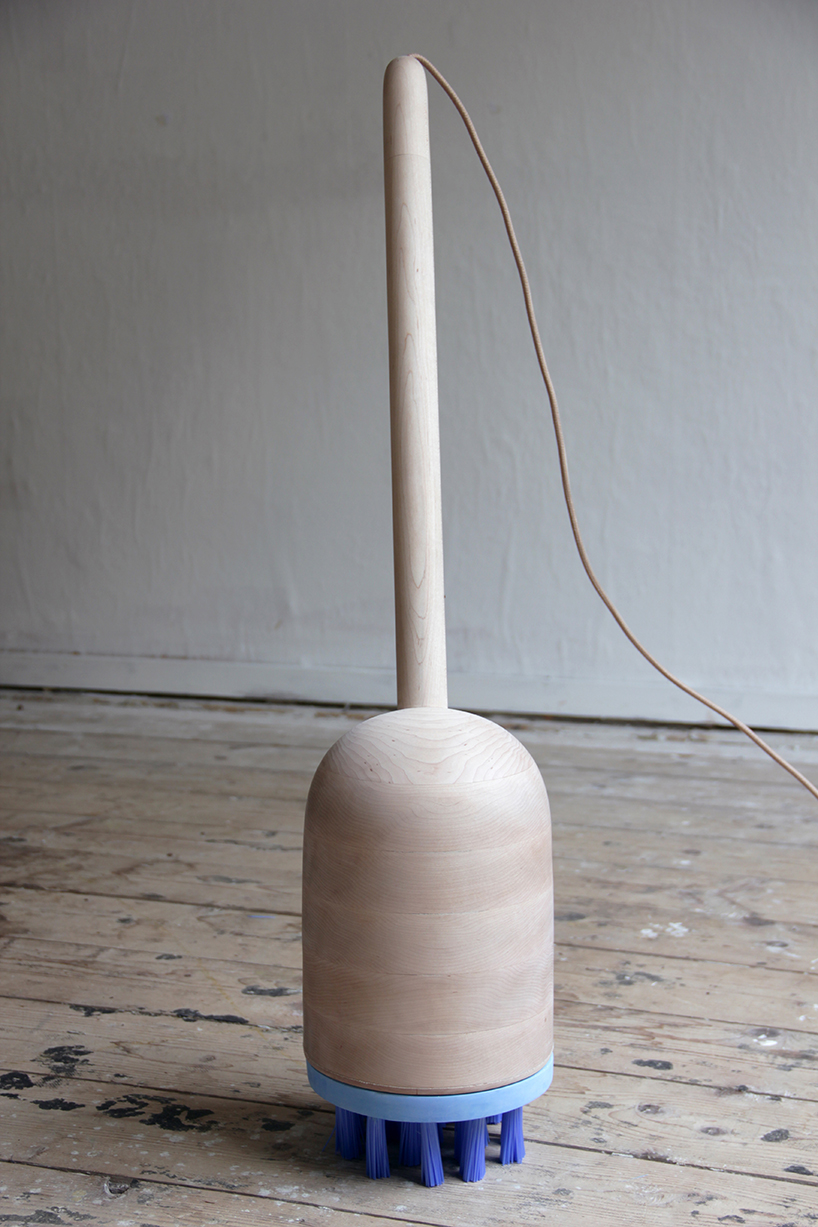 one arm box
one arm box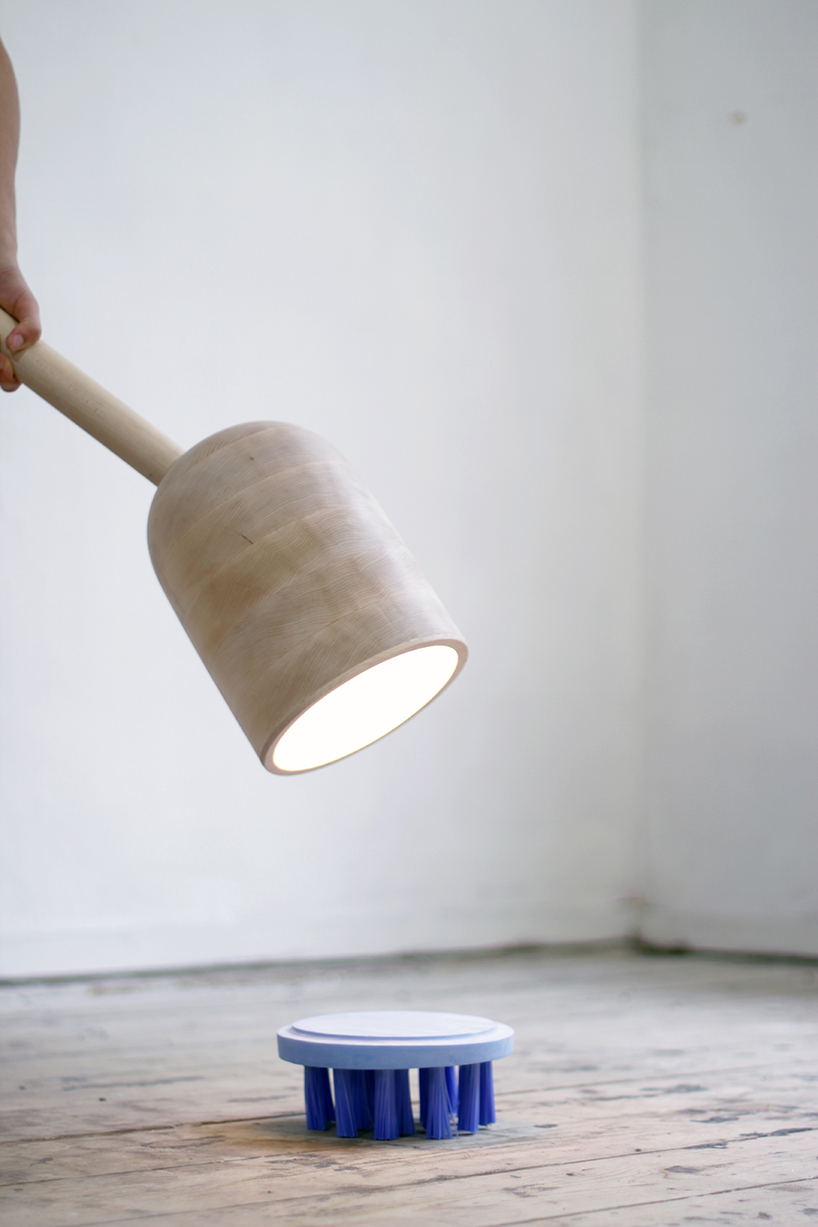 two legged stool
two legged stool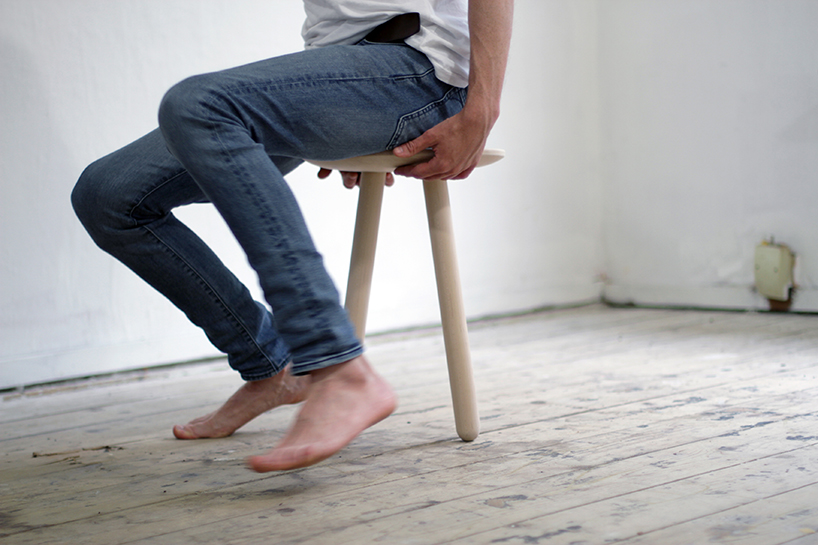 long hair broom
long hair broom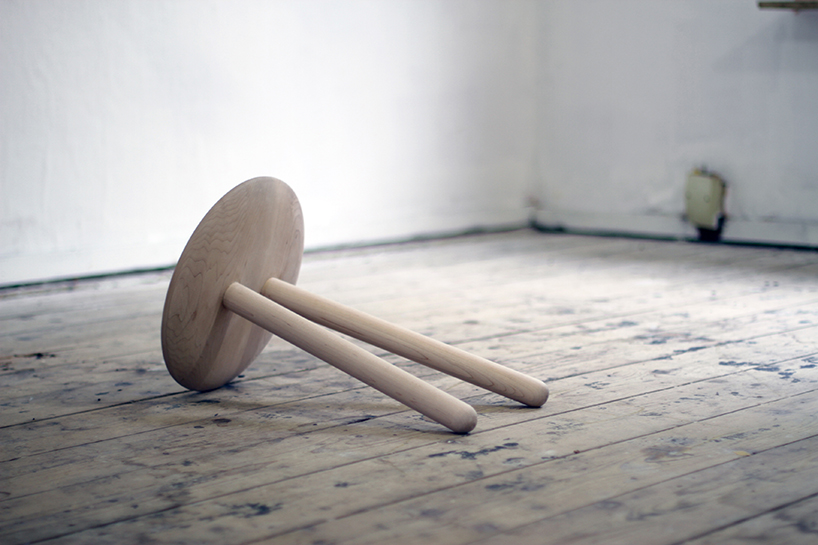 a millipede
a millipede many leggs round
many leggs round